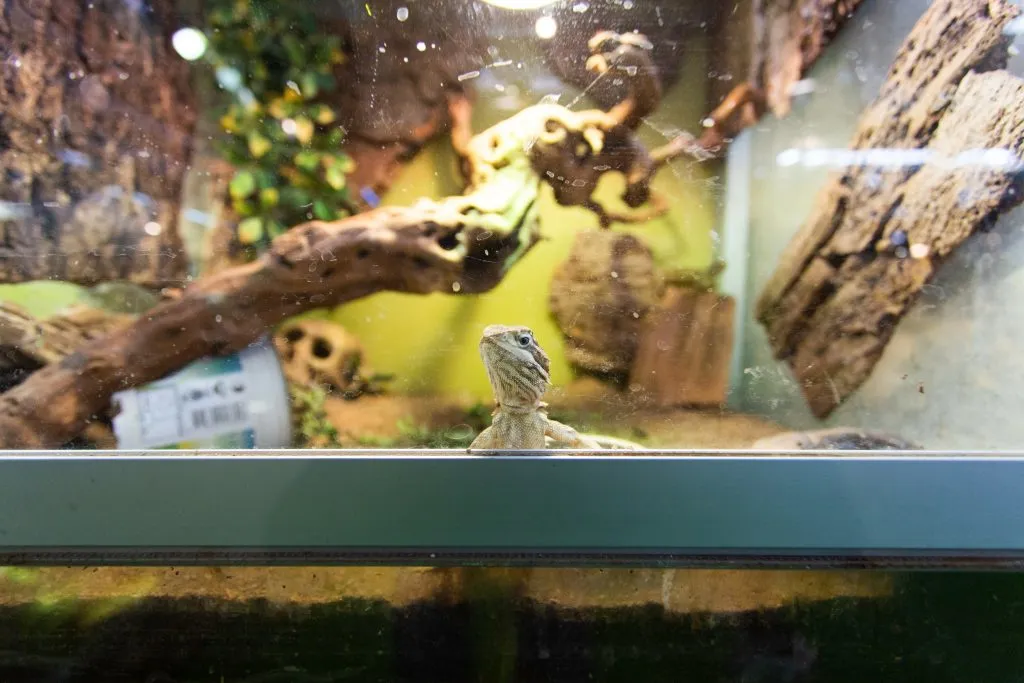
Bearded dragons need a good heat source to remain active. In the wild, they’re known to bask under the sun to get both the light and heat they need. But, in captivity, you need the help of certain equipment to keep them warm and active.
Bearded dragons need heat pads as supplemental sources of heat during winter and at night when other options aren’t available. But as heat pads can cause overheating and belly burns, stick them to the side of the
Before you buy a heat pad, read this article first to know why bearded dragons might need a heat pad and what alternative might be better.
Table of Contents
Why Do Bearded Dragons Need a Heating Pad?
Bearded Dragons Love Warm Areas
Bearded dragons are known to live in the arid, semi-desert regions of Australia. Hence, they will prefer to live in habitats that mimic their natural environment.
Ideally, bearded dragons thrive in habitats that have temperatures above 65 °F (18 °C) but not more than 115 °F (46 °C). Anything above 113 °F can cause them to overheat.
Anything below 65 °F is already too cold for them. This can make your beardies experience a multitude of health issues that can be fatal to them.
Tip: You’ll find a detailed explanation of the bearded dragon’s light and temperature requirements in this article.
Bearded Dragons are Ectotherms
Bearded dragons are part of the reptile family. Reptiles are considered cold-blooded animals, or technically speaking, ectotherms.
Since their bodies adapt to the temperature of their environment, they need external sources to regulate it.
In the wild, bearded dragons bask under the sun to warm themselves and get their daily dose of UVB light. In captivity, you need to provide alternate sources of heat.
During the day, a heat lamp is the best heat source as it mimics the sun. But at night, you won’t need light as it will disrupt their natural sleep cycle. They will still need heat though, and that’s where heat pads come in.
Where to Set Up Heat Pads In Bearded Dragon Tanks

As heat pads don’t provide too much heat, most owners place them under the
But bearded dragons burrow whenever their enclosure gets too hot. If they come in contact with the heat pad, they’ll overheat and get belly burns instead.
The best area to place heat pads is to stick their adhesive side on the side of the
Place a thermostat as well to help you regulate the heat output. Most heat pads don’t have a thermostat bundled with them. VIVOSUN Reptile Heating Pad is one of the best options on Amazon as it already comes with a thermostat.
Safer Alternative to Heat Pads
A safer alternative for heat pads is ceramic heat emitters. Ceramic heat emitters provide consistent heat but don’t produce light. This prevents disrupting your beardie’s sleep cycle.
Here are some of the ceramic heat emitters that you can buy from Amazon:
| Name of Product | Why Buy It |
|---|---|
| Zoo Med Repticare Ceramic Infrared Heat Emitter | • Provides a 24-hour heat source • Has a flat face design that makes it more efficient and longer-lasting (up to 5 years) |
| OMAYKEY 100W Ceramic Heat Emitter | • Made of solid ceramics element • Provides 24 hours of heat with 100% heat efficiency • Could last for 9,000-15,000 hours |
| Fluker’s Ceramic Heat Emitter | • Radiates infrared heat but no light is emitted • Proven to help with reptile digestion • Can be used with a timer for automated turning off and on of the heater |
- Enchi Ball Python: A Unique and Stunning Morph of Python regius - March 27, 2025
- Emerald Tree Monitor: The Enigmatic Green Guardian of the Rainforest - March 26, 2025
- The Egyptian Cobra (Naja haje): A Fascinating Serpent - March 25, 2025
